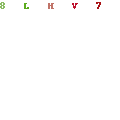Pay-Per-Click
As you read various affiliate program specifications you may notice some say affiliates will be paid based on a pay-per-something plan. Affiliate revenue and payment can be set up in many different ways, usually depending on the type of products and services the merchant is offering. The main three payment structures are: pay-per-lead, pay-per-click, and pay-per-sale.
Pay-Per-Lead
Pay-per-lead revenue is earned by tracking how many qualified potential customers, or leads, visit a merchant. For example: Credit card companies offer this type of program to an affiliate for customers who apply for a credit card. Although the applicant may be denied for the card, the company will pay affiliates for applicants, or leads, as opposed to paying for visitors to the site. Pay-per-lead payment works well for merchants who have customers that don't actual purchase a product, but sign-up for some kind of service.
Pay-Per-Click
Pay-per-click revenue is usually a much smaller amount than per-lead or per-sale programs. For example: $.10 per click would be a pretty high pay-per-click earning rate for affiliates. Affiliates are paid for each unique site visitor under a pay-per-click structure. For affiliates receiving a high volume of traffic, pay-per-click programs could be very profitable. This method would not be as ideal for a low-traffic web site.
Pay-Per-Sale
Pay-per-sale is either doled out as a percentage or a flat-rate amount. Online stores, like Amazon.com, pay affiliates 10% of whatever the customer, recommended to the store by an affiliate, purchases. iPowerWeb, on the other hand, pays affiliates a flat-rate amount, $65.00, for each customer they are sent by the affiliate. Pay-per-sale programs are the best way to earn high commissions with lower traffic sites. (And, of course, could be very profitable for high traffic affiliate sites.)
Sunday, August 17, 2008
Subscribe to:
Post Comments (Atom)
























No comments:
Post a Comment